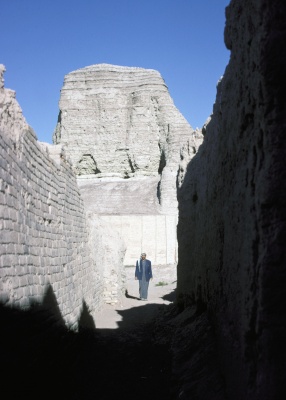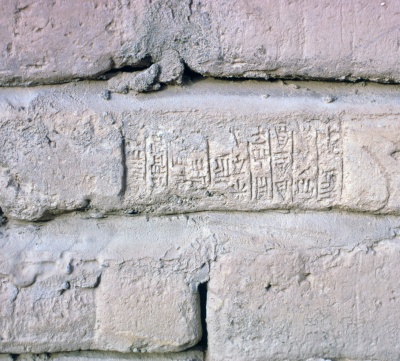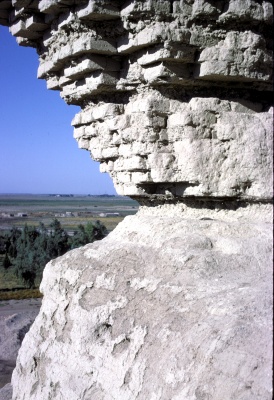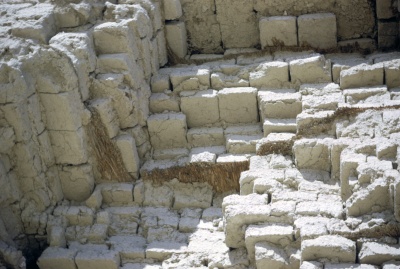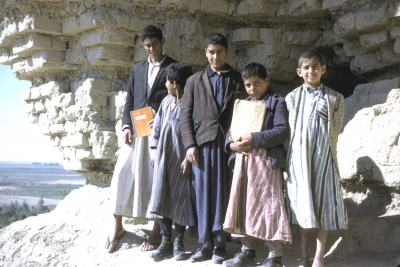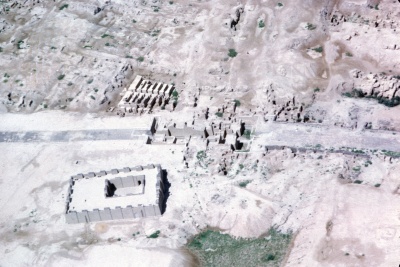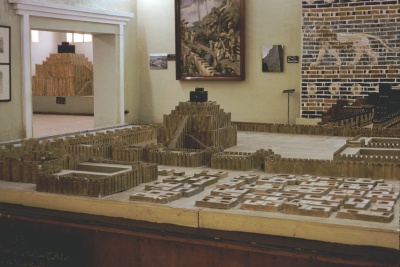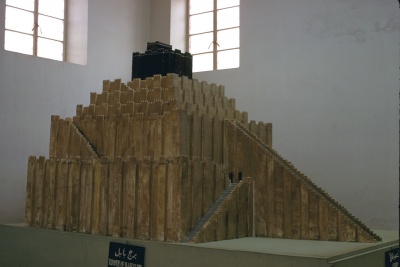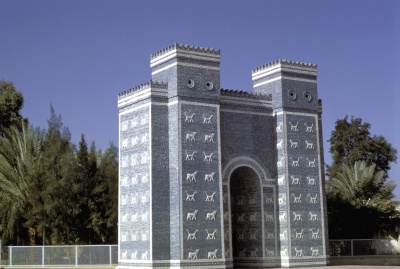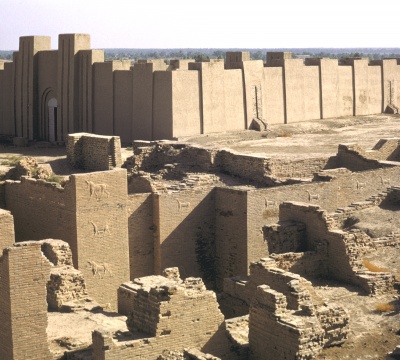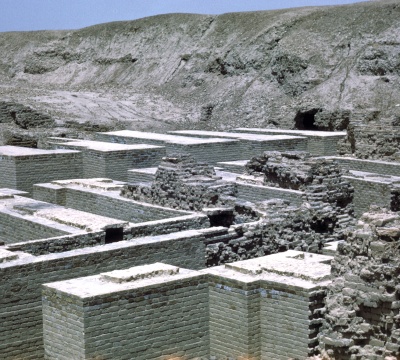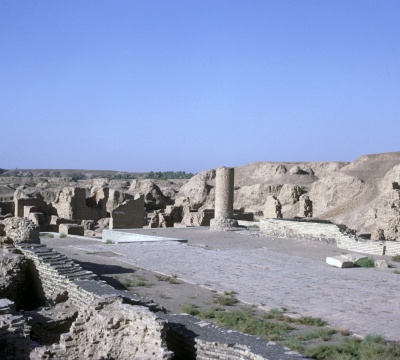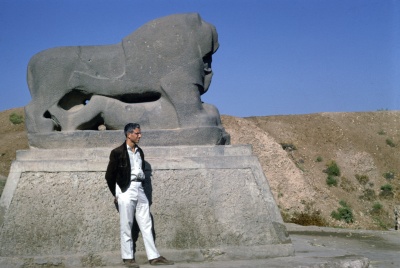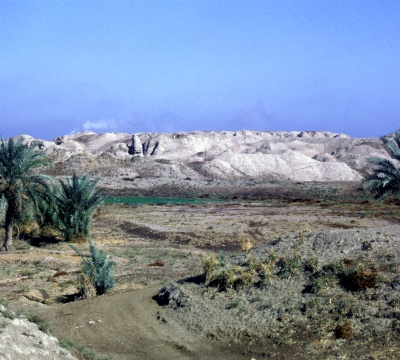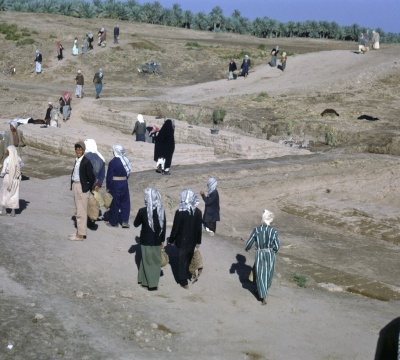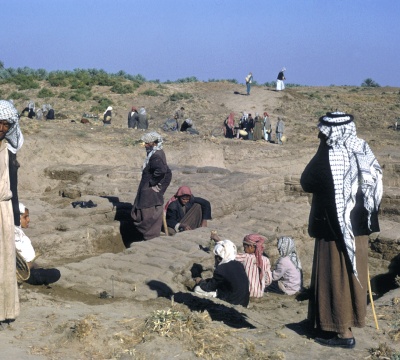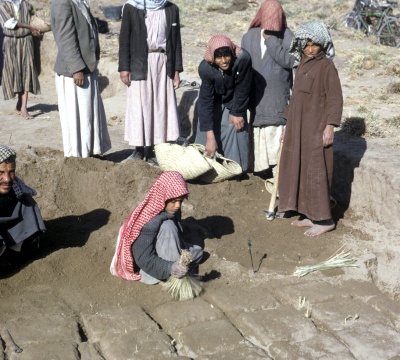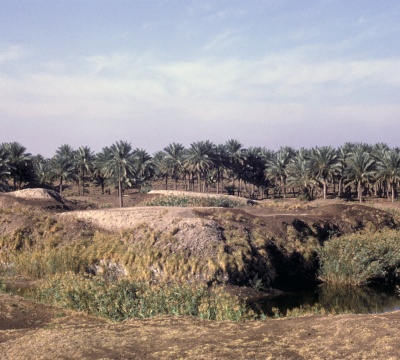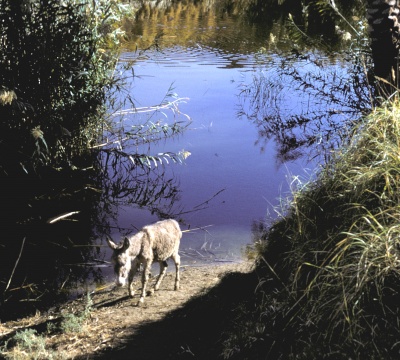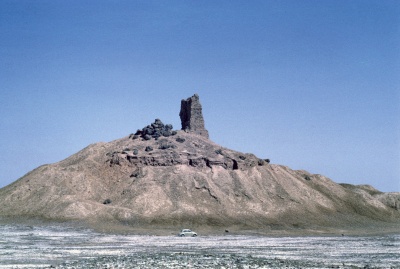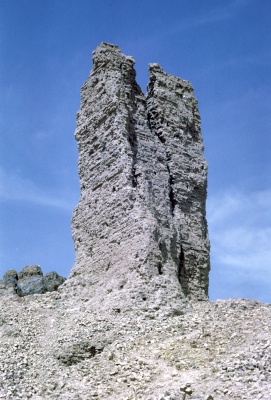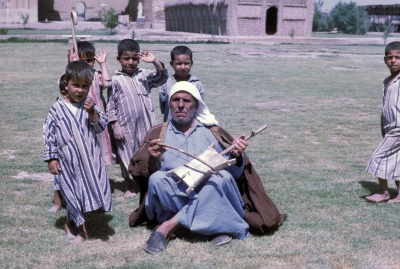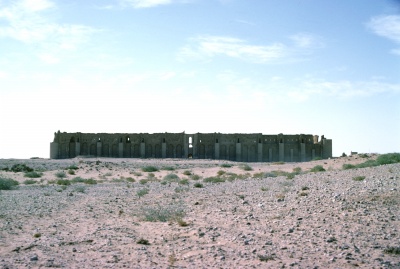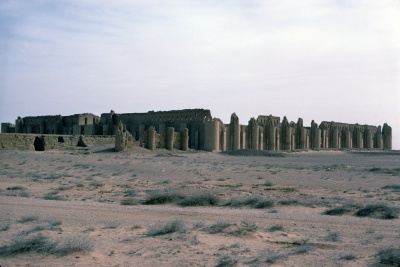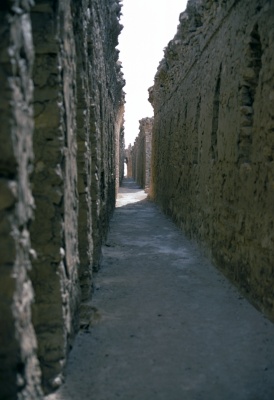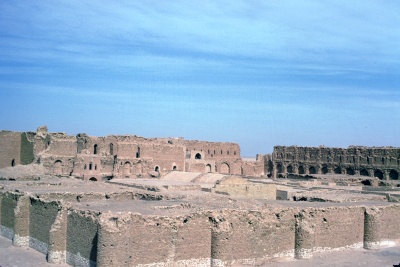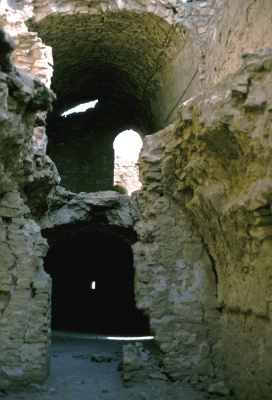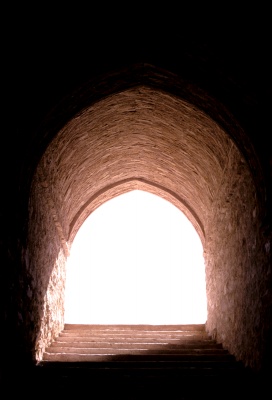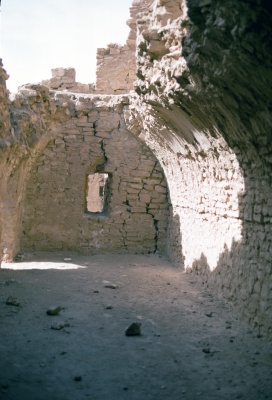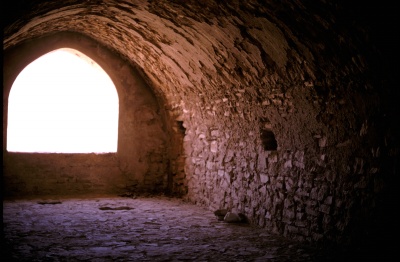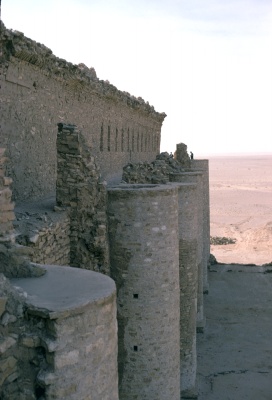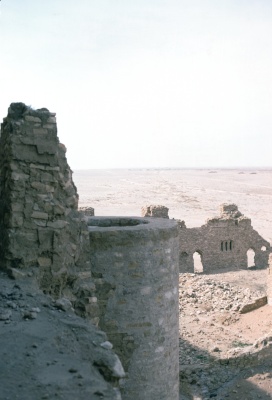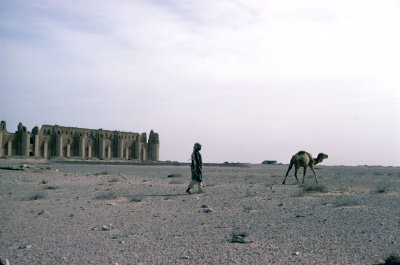2.2.1 Aqar Quf
Agar Quf = Dur Kurigalzu is located about 30 km west of Baghdad. It was the capital of the Kassid Kingdom established by Dur Kurigalzu II 1345-1324 BC. The ziggurat from Aqar Quf today still rises 52 meters about the ground. The site was excavated during 1943-1945 by the Iraqi archeological service. The excavations included the ziggurat, three temples and part of the palace of Dur Kurigalzu II. The ziggurat of Aqar Quf is a good example of the traditional ziggurat construction. The core of the ziggurat consists of sun dried square bricks. Reed mats are located between each 5 layers of bricks, mainly for drainage purposes.
The outer layers of the ziggurat are made from fired bricks. Slide CVSIRQ140 shows an example of a fired brick with inscription stating that this brick was laid during the reign of King Dur Kurigalzu II. Today both types of brick, sun dried and fired, are still made in Iraq in the same fashion and used in farm houses as is shown in slide 144.
2.2.2 Babylon
Babylon is located about 100 Km south of Baghdad in Hilla Province. The present day ruins are mainly from the time of king Nebuchadnezzar 605-562 BC. Babylon was already an important town during the 3rd millennium BC. It served as the capital of the kingdom of king Sargon about 2300 BC and of Hammurabi’s Kingdom.
King Hammurabi, living around 1800 BC was the first king who formulated a complete set of laws covering all relevant aspects of life. These laws were engraved on a stele , the famous “Stele of Hammurabi”, which measures over 2m high and is today located in the Louvre, in Paris..
New Babylon the town from Nebucadnezzar 605-562 BC, was excavated by Robert Koldewey between 1899-1917 a German archeologist. Today still on can still visit the restored Gate of Isthar- the Sun God slide 150 and the Procession Road. slide 154 The Procession Road was used to carry the statutes of Marduk, the main God from Babylon between the ziggurat and various temples which had a function in the Marduk celebrations. Other reconstructed buildings are
The temple of Ninmah, the Mother God: slide 151
The foundations of the hanging gardens.152
These were constructed by Nebucadnezzar for one of his Median concubines, which lady longed for the mountains and forests of her native Median land. In fact the hanging gardens actually consisted of raised platforms, covered with deep layers of earth sufficient for the growth of trees. The trees planted in the gardens were watered by means of a system of pipes and pumps with water from the Euphrates.
Some 2.5 km from the center of Babylon one finds the extensive summer palace complex of Nebucadnezzar, slide 157 probably constructed to replace the small palace complex of which the ruins are located in the middle of town, slide 155
In the middle of the town is the location of the foundations of the ziggurat named Etemenanki, -“House of the foundations of Heaven and Earth “the main ziggurat of Babylon. This ziggurat originally was 90 meter high. It had a ground platform measuring 90 by 90 meters. This enormous massive building with seven stages, with a small temple located on the top, must have been an impressive view, which could have been seen from far away in the flat land around Babylon.
The original ziggurat was constructed during the 3 rd millennium BC. Due to its fragile nature it was many times repaired. The last restoration was probably during the reign of Nebuchadnezzar II in the period 605-562 BC. During the period of the Seleuciers the ziggurat was dismantled and the bricks used for a temple in the Greek style. Today only a gap in the soil remains of the famous ziggurat, which was probably the tower of Babel mentioned in the Bible. Slide 162 shows the scenery “Near the waters of Babylon” A peaceful donkey today grazes near a pond. This pond was actually the gap, which resulted after the bricks were carried away for building the Greek temple some 3 km away from Babylon.
2.2.3 Barsippa
Barsippa is about 10 km west of Babylon and was the site of the main temple and ziggurat complex named: Eur Meininanki: The house of the Leaders of Heaven and Earth. Barsippa was a town which was additional site playing an important role in the religious festivals organized by the Babylon temples. A number of the Babylon processions went to Barsippa which temporarily stored important statues of Gods during certain rituals.
Today the remains of the ziggurat of Barsippa form a good example of the typical construction of the ziggurats or stage towers.
2.2.4 Ctesiphon
Ctesiphon: Seleucia on the Tigris, was founded by the Seleucid king Antiochus I in 247 BC. Seleucia was a large town, counted during its high days over 600 000 inhabitants. It was on of the largest towns of its days. Ctesiphon, the palace of Antiochus I, possesses the largest arched brick vault in the world. Today musicians still play the traditional music of the old days.
2.2.5 Ukhaidir
Ukhaidir the desert hunting castle of Prince Isa Ibn Musa, is located 50 km west of Kebala or 150 KM south- west from Baghdad, in the middle of the plain desert.
Isa Ibn Musa was a nephew from the great Caliph El Mansur, who lived around 800 AD in his famous capital Baghdad, always mentioned in relation to the stories of the “ Thousand and One Nights” of the Arabian world. Life in Ukhaidir was very feasible as water was all year round available from a small river near Ukhaidir. This in spite of that Ukhaidir is located in the plain desert.
Ukhaidir was a large castle containing five main court yards and a large mosque. The castle is today still in good condition.
